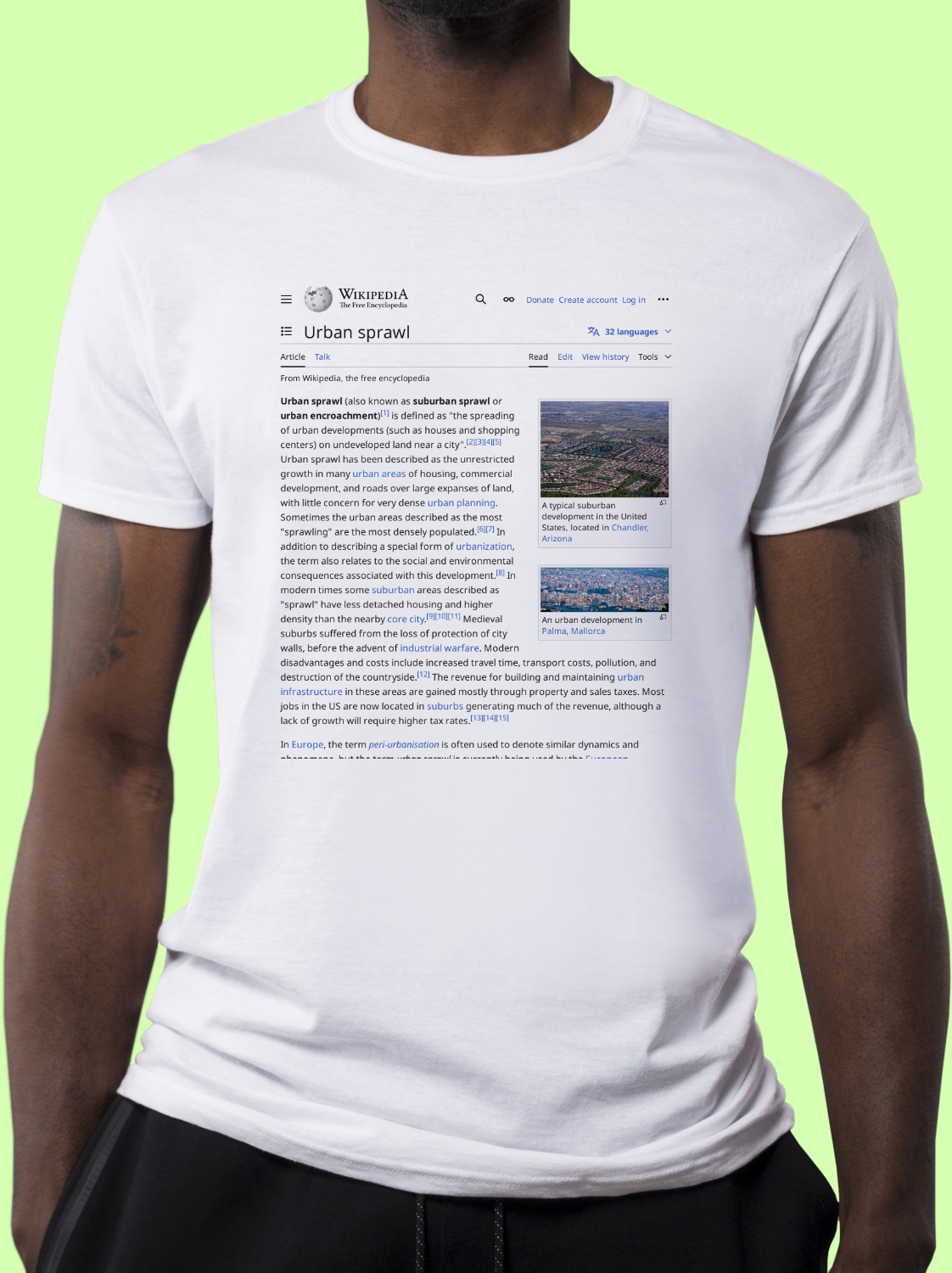
Urban Sprawl Shirt
A classic cotton tee emblazoned with the Wikipedia article on Urban Sprawl ↗.
cotton tee emblazoned with the Wikipedia article on Urban Sprawl ↗.- Preshrunk jersey knit
- Seamless double-needle 2.2 cm collar
- Taped neck and shoulders
- Tear away label
- Double-needle sleeve and bottom hems
- Quarter-turned to eliminate centre crease
Urban sprawl (also known as suburban sprawl or urban encroachment) is defined as "the rapid expansion of the geographic extent of cities and towns, often characterized by low-density residential housing, single-use zoning, and increased reliance on the private automobile for transportation.". Urban sprawl has been described as the unrestricted growth in many urban areas of housing, commercial development, and roads over large expanses of land, with little concern for very dense urban planning. Sometimes the urban areas described as the most "sprawling" are the most densely populated. In addition to describing a special form of urbanization, the term also relates to the social and environmental consequences associated with this development. In modern times some suburban areas described as "sprawl" have less detached housing and higher density than the nearby core city. Medieval suburbs suffered from the loss of protection of city walls, before the advent of industrial warfare. Modern disadvantages and costs include increased travel time, transport costs, pollution, and destruction of the countryside. The revenue for building and maintaining urban infrastructure in these areas are gained mostly through property and sales taxes. Most jobs in the US are now located in suburbs generating much of the revenue, although a lack of growth will require higher tax rates.
In Europe, the term peri-urbanisation is often used to denote similar dynamics and phenomena, but the term urban sprawl is currently being used by the European Environment Agency. There is widespread disagreement about what constitutes sprawl and how to quantify it. For example, some commentators measure sprawl by residential density, using the average residential units per acre in a given area. Others associate it with decentralization (spread of population without a well-defined centre), discontinuity (leapfrogging development, as defined below), segregation of uses, and so forth.
The term urban sprawl is highly politicized and almost always has negative connotations. It is criticized for causing environmental degradation, intensifying segregation, and undermining the vitality of existing urban areas, and is attacked on aesthetic grounds. The pejorative meaning of the term means that few openly support urban sprawl as such. The term has become a rallying cry for managing urban growth.
About Wikishirt
Wikishirt is a retail experiment that lets you buy a shirt with any Wikipedia Article printed on it. There are over 5 million Wikipedia articles, so we have over 5 million shirts.Check out our homepage for random featured shirts and more!